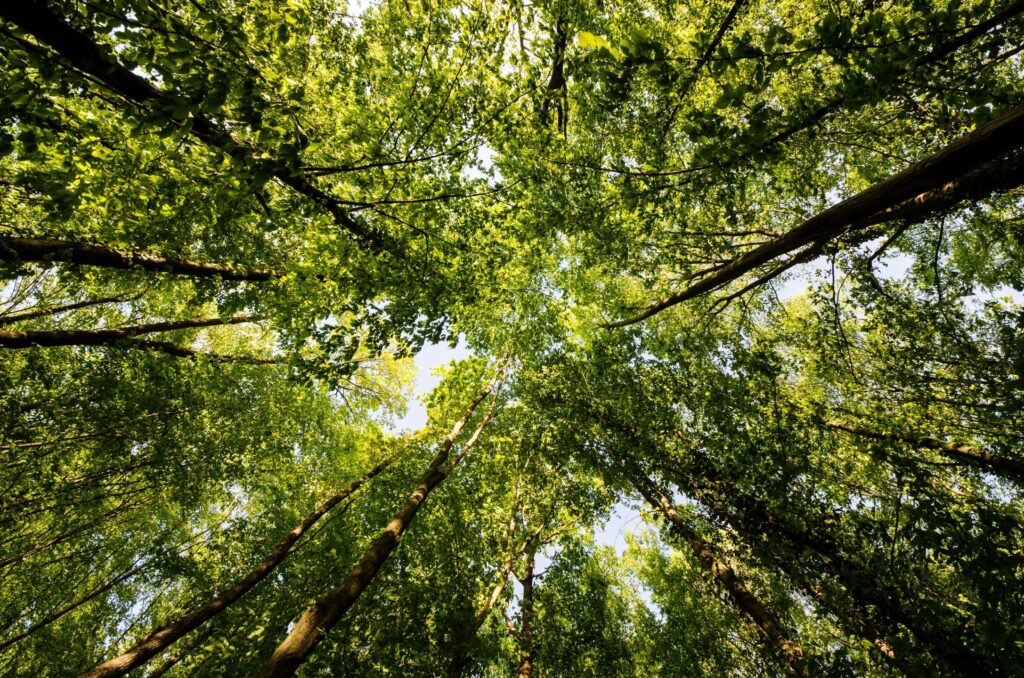Climate for Tropical Rainforest: Compared to any other terrestrial ecosystem, tropical rain forests support a greater diversity of species. It is estimated that tropical rain forests are home to at least half of the world’s land animal species. It indicates that they include somewhere between 2 million and 20 million different species. According to the United Nations, rain forests cover just around 6% of the Earth’s total land area. Tropical rain forests near the Equator may get found in Australia, Asia, Africa, Central, and South America, the Caribbean Islands, and the Pacific Islands. Half of the world’s tropical rain forests are situated in Latin America, with Brazil accounting for one-third of the world’s rain forests.
In equatorial regions, a tropical rainforest biome may get found in hot, humid surroundings. Tropical rainforests, on the whole, have hot, sweltering temperatures with rain almost every day. The amount of rain that falls varies depending on the season. Temperatures fluctuate throughout the year, although not quite as much as rainfall.
What is a rainforest?
Rainforests are forest ecosystems distinguished by high rainfall quantities, a densely packed canopy, and a large diversity of species. The Amazon Basin, located in South America, contains the majority of the world’s tropical rainforests. According to the World Resources Institute, the Congo Basin and Southeast Asia have the second and third most significant amounts of tropical rainforest. Some Caribbean islands, Central America, India, and a few South Pacific islands are also home to rainforests, as are West and East Africa sections outside the Congo Basin, Central America and Mexico, and South America outside the Amazon Basin. Brazil is the country with the most significant amount of rainforest of any country on the planet.
Tropical rainforests are typically found in the equatorial zone between the Tropics of Cancer and Capricorn, at altitudes where temperatures are warm and the sunlight is consistent throughout the year. Tropical rainforests are also found in the equatorial zone between the Tropics of Cancer and Capricorn. As a result of differences in height and latitude and soil, floods, and temperature conditions, tropical rainforests give way to other forest forms. These forest types constitute a mosaic of plant types, contributing to the remarkable flora of low lands.
Where is the rainforest?-Climate for Tropical Rainforest
Because tropical rainforests are located on or near the Equator, the temperature in these areas is often warm and moist. Vegetation thrives in this climate because of the abundant rainfall and high temperatures throughout the year. The great diversity of vegetation provides a haven for many insects, birds, and other creatures. Throughout the year, temperatures in the tropical jungle are pretty high.
Annual temperatures are typically around 28°C on average, with slight variance from one day to the next. The temperature range is relatively narrow throughout the year. The temperature never goes below 20°C and very rarely rises beyond 35°C in the summer. The amount of rain falls is significant, with an average annual total of approximately 2000mm. This substantial quantity of rainfall feeds water to large rivers such as the Amazon in Brazil and the Congo in Central Africa, among other things. It is raining heavily most afternoons, which aids in the preservation of the rainforest’s moisture. As a result of the high temperatures and availability of water in the tropical rainforest, the environment in this region is hot and humid.
Do tropical rainforests affect weather in other places?
When forest-clearing fires cause air pollution and release microscopic particles into the atmosphere, known as aerosols, the amount of rain that falls can be reduced. According to NASA research, high concentrations of biomass-burning aerosols directly impact local climate by increasing cloud formation while simultaneously decreasing rainfall. While aerosols can cool and heat the air depending on their size, shape, and color, high concentrations of biomass-burning aerosols directly impact the local climate by increasing cloud formation while simultaneously decreasing rainfall. Cloud droplets develop around aerosol particles in densely populated places where there is a lot of smoke. Still, they may never grow large enough to fall as rain, according to NASA’s Goddard Space Flight Center experts who researched the phenomenon. As a result, substantial forest fires have the impact of further lowering rainfall, making burnt regions more susceptible to dryness and more fires in the future.
Through their interaction with water cycles, Tropical rainforests play a critical role in regulating the local climate. Rainforests, on the other hand, have a substantial impact on global weather patterns. Because rainforests absorb more heat than bare soil, they affect a surface’s “surface albedo,” or reflection, measured in degrees Celsius, like different vegetation types. Because of this, moisture from forest trees is transported into the sky, where it condenses to form raindrops. Tropical woods both chill the local climate and aid in the production of rainfall. On the other hand, the loss of forest vegetative cover results in less heat absorption, resulting in less moisture being absorbed into the atmosphere.
Why are rainforests important?-Climate for Tropical Rainforest
Rainforests are sometimes referred to as the “lungs of the earth” because of their function in collecting greenhouse gas, carbon dioxide and creating oxygen, which is essential for the existence of all living things. Rainforests also help regulate the climate, provide habitat for an astonishing variety of plants and animals, and provide nutrient-rich rains worldwide.
Here are the reasons rainforests are essential:
Flood, drought, and erosion protection:
Rainforests have been compared to natural sponges, mitigating flood and drought cycles by delaying run-off and supplying moisture to the nearby atmosphere, respectively. Rainforests are also essential in controlling soil erosion because their roots hold the ground and prevent it from washing away. The environment becomes exposed when trees get chopped down, and the rain swiftly washes away soils. Landslides can occur on steep hillsides as a result of the removal of forest cover.
Please contribute to the maintenance of the water cycle:
Rainforests play an essential role in the care of the water cycle because they add water to the atmosphere via transpiration (in which plants release water from their leaves during photosynthesis). This moisture helps create rain clouds, which dissipate the water back onto the rainforest floor as they fall. Between 50 and 80 percent of the moisture in the Amazon is retained in the ecosystem’s water cycle. When trees are destroyed, less moisture is released into the sky, resulting in reduced rainfall, sometimes resulting in drought. Rainforests also play an essential part in the formation of global weather patterns.
Assist in stabilizing the global climate:
Rainforests contribute to stabilizing the global environment by absorbing carbon dioxide from the atmosphere. As a result of human activity-related excess carbon dioxide in the atmosphere, scientists have discovered that it contributes to climate change. As a result, live rainforests play a significant role in climate change mitigation; yet, when rainforests are cut down and burned, the carbon contained in their wood and leaves is released into the atmosphere, further contributing to climate change.
How is the climate in the tropical rainforest?-Climate for Tropical Rainforest
Tropical rainforests, in general, have hot and humid temperatures, with rain falling almost every day of the year. The amount of rainfall received is determined by the time of year. Temperatures fluctuate throughout the year, although they do so considerably less so than rainfall. The tropical rainforest biome is found in hot, humid areas with equatorial temperatures. They are home to the most diverse array of plant and animal life found anyplace on the planet, as well as the most significant amount of it. Because of the high levels of iron and aluminum in the soil, the color of the ground is red. A heavy layer of leaf litter and decaying organic materials has accumulated on the surface of the water.
What is the tropical climate?-Climate for Tropical Rainforest
The tropical climate is between the wet tropical climates and the dry tropical climates in both the northern and southern hemispheres. It may get found in both the north and southern hemispheres. It has a latitude range of 5 degrees to 10 degrees and a longitude range of 15 degrees to 20 degrees, respectively. The tropical savanna is most commonly associated with Africa. Yet, it may also be found in Venezuela, Brazil, Central America, the Caribbean, Indo-China, sections of India, and even some regions of Florida, depending on where you look.
Is there wind in the tropical rainforests?
When wind speeds are recorded below the forest canopy, they are slower. Because tropical rainforests are composed of dense stands of broad-leaved trees, any breeze that passes above the dense canopy is stifled in the understory, resulting in a stagnant environment. As reported in the “Journal of Applied Meteorology,” wind speeds at the forest floor in a Colombian jungle were generally between 1 and 5 percent of the wind speeds observed above the forest canopy, depending on location.
The wind speed in a tropical rainforest varies based on the year’s season and even the time of day. Most tropical rainforests have a dry season that lasts many months, during which rainfall reduces, and wind speeds somewhat increase, as seen in the graph. Daily, the wind speed in a rainforest reaches its highest point around midday and its lowest point in the early morning.
During the day, tropical rainforests are characterized by relatively weak breezes that make the environment feel even more humid and hotter than it is. A tropical rainforest’s average wind speed is 10 kilometers (6.2 miles) per hour above the canopy; however, most of the time, winds are less than 5 kilometers (3 miles) per hour. The highest recorded wind speeds have been seen at higher altitudes on rainforest slopes.
What is the difference between Tropical and Temperate Rainforests?
Both types of rainforests are distinguished by the presence of epiphytes, which are plants whose roots (if any) do not reach the ground surface. While epiphytes are not considered parasites, they are commonly found on other plants, such as trees, where they can establish a home. Epiphytic plants may get found in both temperate and tropical rainforests. The primary distinction between a temperate rainforest and a tropical rainforest is their geographical location. Tropical rainforests are located near the Equator, between the Tropics of Cancer and Capricorn, and are characterized by lush vegetation. Temperate rainforests may be found to the north and south of the Tropic of Cancer and the north and south of Capricorn, respectively.
Climate conditions in the temperate rainforest are characterized by temperatures that seldom drop below freezing and that rarely rise over 80 degrees Fahrenheit even in the height of summer. Temperate rainforests have continuously colder temperatures, limiting decomposition, resulting in a thick layer of nutrient-rich soil and decaying organic waste. Parts of Canada and the United States, Chile, New Zealand, and Norway all have temperate rainforest climates, as do other countries in the region.
The climate of the tropical rainforest is hotter than the climate of the temperate rainforest. The temperatures range between 70 and 90 degrees Fahrenheit on an average day, while the tropical rainforest biome has humidity levels ranging from 70 percent to 90 percent. Because of the warm environment, dead organic matter decomposes exceptionally quickly, resulting in an exceedingly thin soil layer devoid of nutrients in the tropical rainforest.
The takeaway-Climate for Tropical Rainforest
Tropical rainforests are the most diversified and oldest environment on the planet, and they also happen to be the most ancient. Most of the year’s total precipitation falls in equal distribution, and temperatures seldom fall below 60 degrees Fahrenheit (16 degrees Celsius). The location of rainforests around the planet is responsible for the consistent climate. Because of this rotational orientation, the Northern and Southern hemispheres spend a portion of the year tilted away from the sun. Given that rainforests are close to the Equator, they are not particularly affected by this climate change.
Throughout the year, they receive approximately the same amount of sunshine and, thus, heat. As a result, the weather in these areas is relatively consistent. Plantlife thrives in the regularly damp, warm weather and abundant sunlight that characterizes the climate in this region. Trees can grow to incredible heights and may survive for hundreds, if not thousands, of years in the wild.
Recommended Reads
- Rain Forest of Australia
- Life of Tree in Bahrain- All You Need to Know
- Nail Ideas for Vacation-Top 10 for 2021
- A Case for Online Stores to Use Sandals SEO Strategy


